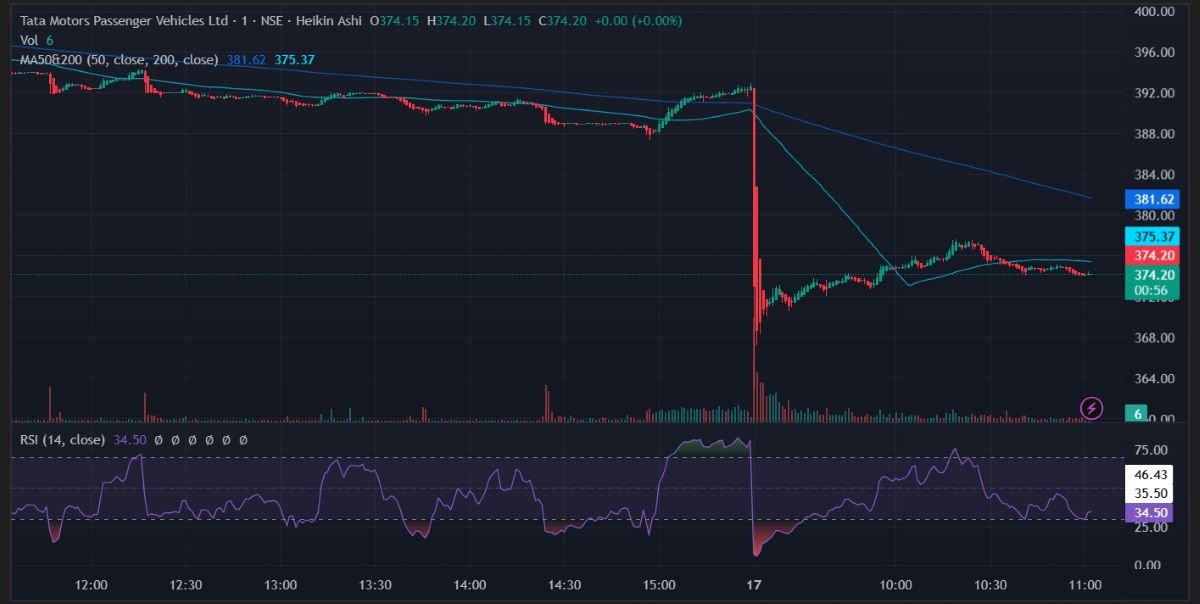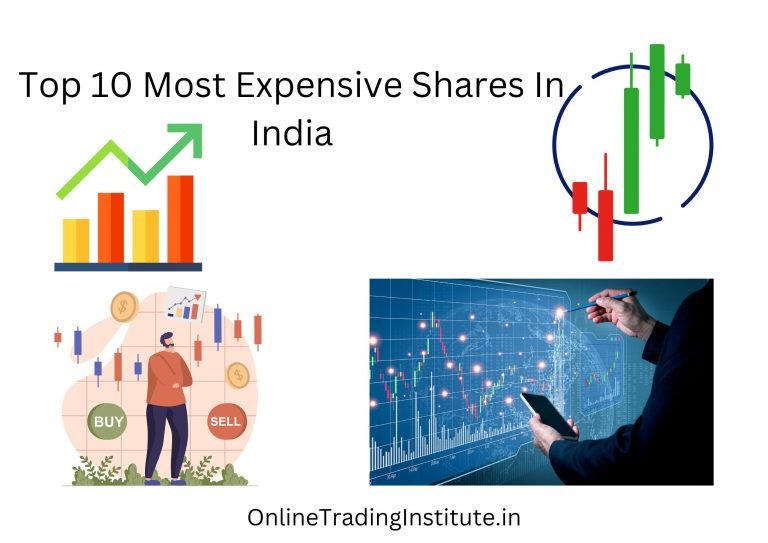TMPV Share Price Drops Sharply: What Triggered the 7% Crash After Q2 Results?
TMPV Share Price: The TMPV Share Price came under heavy selling pressure today, falling over 7% despite Tata Motors Passenger Vehicles posting a staggering multi-fold rise in Q2 profit.

The sharp decline has raised investor concerns, especially since these were the company’s first quarterly results after the much-talked-about demerger.
Why Did TMPV Share Price Crash Despite a 2,110% Profit Surge?
The fall in TMPV share price surprised many on Dalal Street, mainly because headline numbers appeared extremely strong. TMPV reported a 2,110% year-on-year jump in net profit for Q2 FY26, driven by a one-time notional gain arising from the disposal of discontinued operations.
However, the underlying performance painted a different picture.
Key Q2 Financial Highlights (Post Demerger)
| Metric | Q2 FY26 | Q2 FY25 | Change |
|---|---|---|---|
| Consolidated Net Profit | ₹76,170 cr | ₹3,056 cr | +2110% (includes notional gain) |
| Exceptional Gain | ₹82,616 cr | — | One-time item |
| Profit (ex-exceptional) | –₹6,368 cr | ₹3,056 cr | Major swing to loss |
| Revenue from Operations | ₹72,349 cr | ₹83,656 cr | –13.5% |
Even though the headline profit figure looks extraordinary, the actual operating performance indicated a loss, reversing last year’s strong profitability. Investors reacted to this hidden weakness, triggering a sell-off.
How Did TMPV Share Price Perform Today?
On November 17, TMPV shares opened weak at ₹380, slid to a low of ₹363, and later traded around ₹374 with heavy volumes—more than 1.27 crore shares exchanged hands on NSE in the first hour.

Immediate Support Levels
These levels are derived from the visible swing-lows, consolidation zones, and reaction points after the major fall.
| Support Level | Reason / Observation |
|---|---|
| ₹363–364 | Strongest support – this is the exact intraday crash low and the point where heavy buying volume appeared, stabilising price. |
| ₹370 | Minor support – price repeatedly held this level in the post-crash consolidation phase. |
| ₹374 | Intraday support – the stock traded flat around this level for an extended period after bouncing from lows. |
Immediate Resistance Levels
These levels are derived from the moving averages (MA50 & MA200), pre-crash highs, and rejection wicks.
| Resistance Level | Reason / Observation |
|---|---|
| ₹381–382 | Major resistance – matches the MA200 zone shown on the chart; price rejected sharply from this zone before the crash. |
| ₹375–376 | Minor resistance – aligns with MA50 area and price failed to close above this range in the recovery. |
| ₹388–390 | Higher resistance – this is the pre-breakdown area where the stock last topped before the vertical fall. |
Technical Observations
- RSI dipped below 25, indicating oversold territory during the crash.
- Post-bounce, RSI struggled to cross 46, signifying weak buying momentum.
- Volume spike at the crash candle confirms panic-selling followed by short-covering.
- Both MA50 and MA200 are sloping downward, signalling continued short-term weakness.
How Did the JLR Cyber Incident Affect TMPV’s Q2 Performance?
A key drag on the TMPV share price was Jaguar Land Rover (JLR), which continues to remain the most influential business within the PV structure even after the demerger.
JLR was hit by:
- A major cyberattack that halted production
- Weak demand in key global markets (China, US, Europe)
- Tariff-related uncertainties
- Higher vehicle marketing expenses (VME)
Management noted that while production normalised in November, Q3 may still feel the after-effects. The downgrade in EBIT margin guidance from 5–7% earlier to just 0–2% further spooked investors.
What Has Changed After Tata Motors’ Demerger?
Tata Motors completed its long-awaited demerger in October 2025, separating its Passenger Vehicle (PV) and Commercial Vehicle (CV) divisions into two independently listed entities. TMPV now houses:
- Passenger Vehicles
- Electric Vehicles
- Jaguar Land Rover
The demerger was expected to unlock value. However, TMPV’s first quarterly performance raised immediate questions about the sustainability of earnings without exceptional items.
Should Investors Buy, Sell, or Hold TMPV Shares?
Short-term volatility is expected to continue as:
- JLR’s recovery remains uncertain
- Cyberattack impact may spill into the next quarter
- Exceptional gains distort real profit visibility
- Global luxury car demand is under pressure
However, on the positive side:
- Domestic PV demand remains strong
- EV pipeline looks robust
- Tata’s brand equity and product mix continue to strengthen
Investors with low-risk appetite may prefer to wait for clearer signals from JLR, especially around Q3 performance and margin recovery.
Final Takeaway: What’s Next for TMPV Share Price?
The correction in TMPV share price reflects the market’s shift from headline profit numbers to core operating realities. While the demerger sets a strong structural foundation, the near-term outlook hinges on JLR’s ability to bounce back from cyber disruptions, revive volumes, and expand margins.
Click Here to know more market & IPO related news and updates.
Disclaimer: The views and investment insights provided here are based on publicly available information and do not constitute financial advice. Readers are advised to conduct their own research or consult certified financial experts before making investment decisions.



